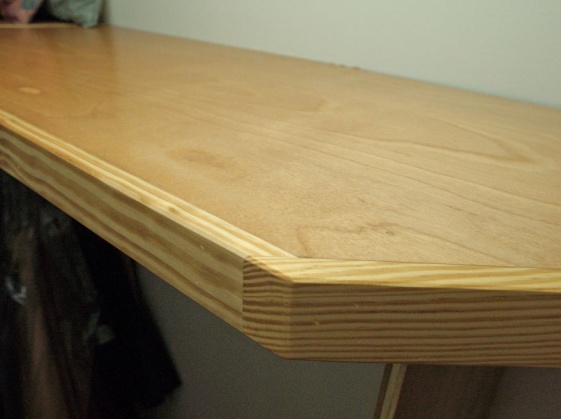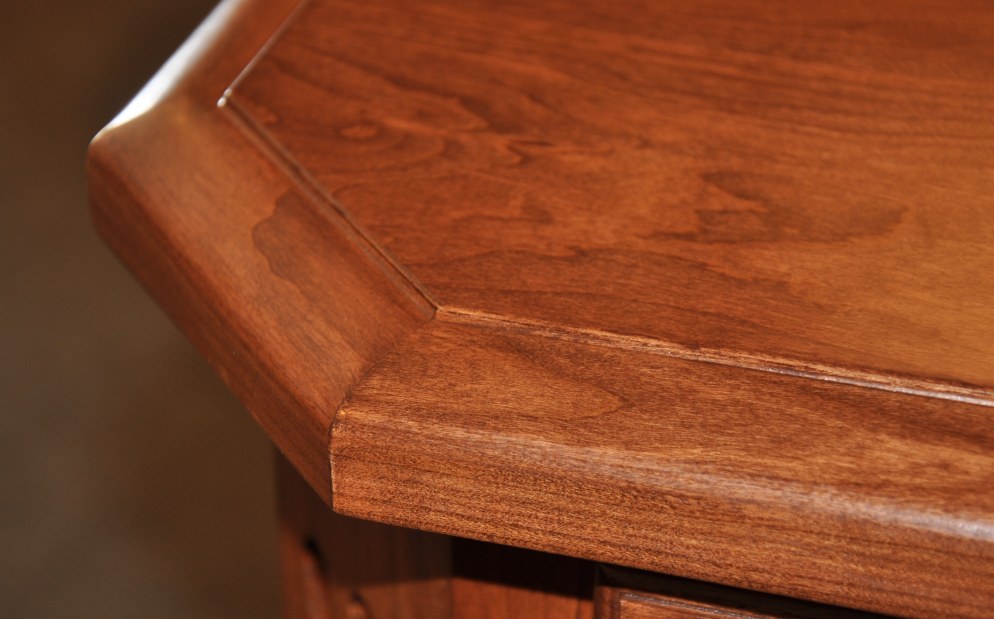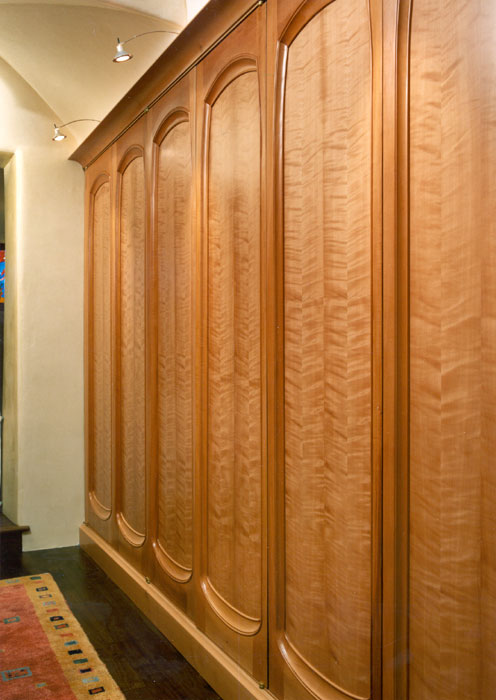Sometimes the furniture design solutions involve combining solid wood with veneered chipboard or MDF panels. Whether the reasons for adopting these solutions are economic or technical, the appearance of the furniture should not suffer. The combination of solid wood and veneered panels can, however, mean staining problems if the finish is transparent. Here are some suggestions to avoid them.

Caution when sanding wood white
In general, the combinations are made of the same type of wood, for example solid oak with oak veneer or solid poplar with poplar veneer. There are exceptions, however, where solid wood and veneer differ. In all these cases, but especially where the species are different, there may be differences in colour between solid and veneer when staining, due to the different absorption of the berry into the wood.
Solving the problem starts with white grinding. It is recommended that sanding be finished with fine-grained paper - 180-220 - to reduce absorption, especially in the case of solid wood. Low absorption leaves the stain on the surface, which results in a uniform appearance of the furniture.

Uniform colouring
Colouring Uniformity can be achieved in several ways. One of the simplest is staining with solvent-based stains. It's a way to reduce dye absorption in wood. If technology or environmental requirements do not allow the use of solvent-based stain, water-thinnable stains can be used in which some of the water is replaced by special levelling resins. These are water-soluble resins that prevent the deep absorption of the stain, resulting in a more uniform appearance.
Use of wiping baths after application is also a way to achieve uniform staining of solid wood-veneer panel combinations. Apply the stains liberally with a spray gun, then wipe off the excess with a cloth. Wiping is initially done in circular motions over the entire surface and finally along the grain. The wiping of the bath and the resin content results in a uniform appearance of the furniture.
Uniform staining can be achieved by creating a barrier to prevent deep absorption of the bath. It is made applying an insulator or even a diluted primer between 50 and 100%. Apply a very thin coat so that no film forms. After drying and light sanding, apply the primer. Be careful, the method must be checked beforehand. The primer may be compatible with the primer when applied on top, but incompatible when the order is changed.
When the finishing technology is more elaborate, different materials can be used to help achieve a uniform appearance. This is the casel skates. Applying them to achieve the ageing effect also has a smoothing effect on the furniture.
Uniform staining of the solid wood-veneer panel combination can also be achieved by using a specially formulated staining solution called standardizing. It's a kind of quick-drying dip that is applied over primer before the final coat of varnish. The layer applied must be very thin, like a coloured veil that lies under the varnish, giving the impression of uniformity over the entire piece of furniture.


In conclusion, when there are solid wood-veneer panel combinations, the different absorption of staining solutions in the two wood backing tops must be taken into account for a uniform staining appearance.
I hope you find the above information useful. As usual, additions are welcome. And if you have any questions or queries, please leave them in the space below. I'm sure I'll get back to you



























Add comment